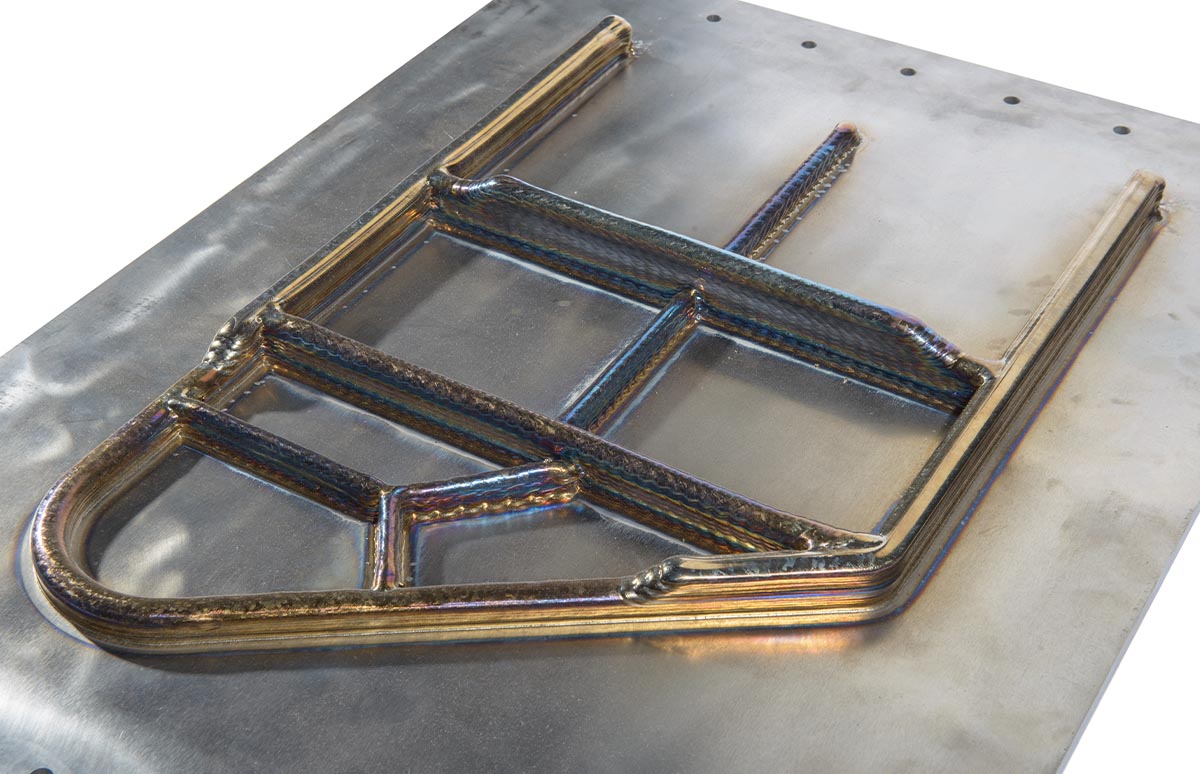The testing and development of a part can be a long, drawn-out, and costly process. When it comes to metal part prototyping and design updates the options are predominantly 3D metal printing, CNC machining, extrusion, sheet metal fabrication and casting.
For prototype creation and component design adaptations, wire arc additive manufacturing (WAAM) offers many benefits, including flexibility, risk-reduction and cost benefits, particularly for large-scale parts. With speed key in any prototype development work, metal printing using WAAM can lead to faster production times than casting or forging – shrinking product realisation from months to days.
Large-scale part flexibility
For the production of big components with less complex geometries WAAM comes into its own. It avoids the expensive waste associated with machining materials such as titanium and can create medium-to-large scale structures in a range of materials (from titanium, aluminium, refractory metals, steel, bronze and copper to Invar®, Inconel® and magnesium).
Here is the WAAM process in action:
- Once the CAD has been decided upon, the wire and substrate materials can be selected
- The positioning of the substrate feedstock is then decided
- The WAAM pre-form is built, and printing costs and the part’s environmental performances assessed
- The tool-path plan is then produced in minutes, with process parameters calculated automatically for materials that are available in our database
- A simulation of the printing process is run to identify collision risks and calibration issues
- The starting feedstock can then be clamped into the RoboWAAM machine using existing tooling, and the print executed
- Data coming from over 60 sensors monitors progress throughout the printing process; it is compared to predicted and expected values, including geometrical ones (thanks to the proprietary interferometric in-process 3D reconstruction happening whilst the material is being deposited)
- If any non-conformity arises it is flagged immediately
- The part is then signed off and sent to machining.
Keeping pace with design developments
Building flexibility into the design process can be hard, especially when a part is years in development. By the time it is nearing completion, design adaptations are extremely costly, if not near impossible. However, thanks to the flexibility of WAAM’s process, component design can be altered at short notice, allowing for adaptations to be accommodated with minimum difficulty.
This is proving particularly popular in fast-moving sectors such as aerospace, where designers are able to adapt prototypes to suit changing cost and performance requirements. A recent example of this was WAAM3D’s work with the Aircraft Research Association Ltd (ARA) in Bedford:
- WAAM3D and ARA partnered to manufacture an aluminium nose cone of diameter 190mm and length 350mm
- During the development process of the prototype and finished piece, the project team optimised the design of the nose cone to make best use of the starting bar feedstock, minimising the material to be deposited, production time, and overall cost.
- The two organisations, leveraging on decades of experience in their respective fields, were able to compress the often-critical lead time between shape definition to manufactured component and reduced cost with material usage reduced by 74%.
- Following this new trial, ARA and WAAM3D will seek to apply WAAM to a larger number of components and investigate other alloys
WAAM3D is helping take prototype production and design adaptations to the next level, thanks to advancements in large format 3D metal additive printing. Click here for more information on how WAAM can take your prototype design to the next level.




